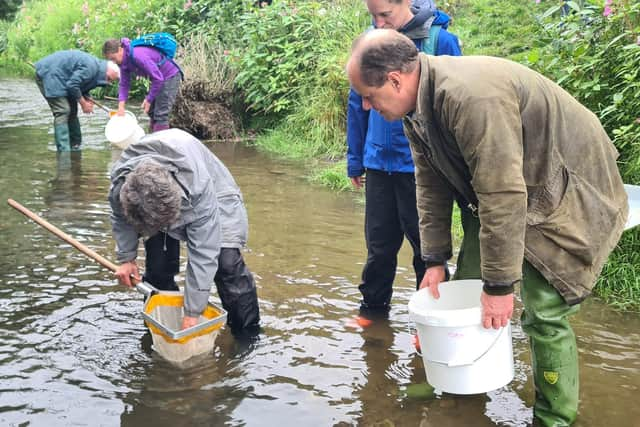Landmark £500,000 payout from Yorkshire Water over sewage spill which killed "significant" amounts of fish and wildlife kickstarts restoration project
Plans have been in the making since for restoration of the aquafauna and species that occupy Hookstone Beck, a tributary of the River Nidd, and a project that involves several organisations is looking for volunteers to help it develop further following a landmark £500,000 pay out from Yorkshire Water, which was made last year.
The Yorkshire Dales Rivers Trust (YDRT) is working with partners – including Wild Trout Trust (WTT) and Nidd Action Group – on plans to bring Hookstone Beck back to life and are looking for 20 enthusiastic and committed volunteers to partake in their iNidd Riverfly Monitoring Programme.
Advertisement
Hide AdAdvertisement
Hide AdTraining will be given to see them take ownership of a site and monitor aquatic invertebrate populations between May and September, whilst YDRT is running invasive non-native plant identification training, to help up-skill local communities in recognising, and controlling, invasive plants.


Charlotte Simons, senior project manager at YDRT, said: “The £500,000 payment has enabled us to redouble our efforts in monitoring the health of the River Nidd and its tributaries, which will help us target our restoration plan.
“The appointment of a river enhancement project manager to oversee this iNidd workstream means that we have been able to start building partnerships and are now ready to recruit a cohort of volunteers, who will be specially trained to support the programme.
“Riverfly monitoring is a vital tool in establishing the overall health of a stretch of river, since testing the chemistry of the river water only offers a snapshot of actual pollution levels. Animals in our rivers respond to water quality throughout their whole life span with many aquatic invertebrates such as caddisfly and dragonfly larvae and nymphs not able to survive in polluted water, so their presence or absence is a very strong indicator of pollution levels.”
Advertisement
Hide AdAdvertisement
Hide AdThe UK has a combined sewer system, built during the Victorian era, where rainwater (collected from surface water drains) and wastewater from toilets, bathrooms, and kitchens, flow through the same pipes to sewage treatment works,
However, during heavy rainfall, the capacity of these pipes can be exceeded.
In order to prevent sewage flooding homes, businesses and streets, when the wastewater network is running at capacity, there are points in the system called combined sewage overflows (CSO) and they act as safety valves, discharging raw sewage (mixed with rainwater) into rivers and seas.
Legally, this must only happen in exceptional circumstances, but, according to YDRT, last year there were 464,056 discharges counted with untreated sewage discharged for a total of 3,606,170 hours – more than double the figure for 2022.
The government has committed water companies to spend £56bn between 2025 and 2050 to reduce CSO spills into waterways and designated bathing areas.
Comment Guidelines
National World encourages reader discussion on our stories. User feedback, insights and back-and-forth exchanges add a rich layer of context to reporting. Please review our Community Guidelines before commenting.
